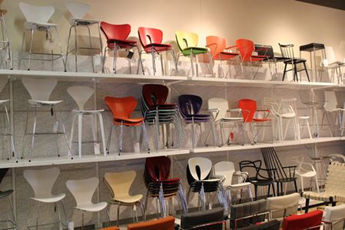The Whole is Still Greater than the Sum of its Parts
 Okay, I’ll admit it. A big part of my love for marketing is a love of design. The connection between the two holds a lesson for planned giving marketing. Look at the two examples at left and below.
Okay, I’ll admit it. A big part of my love for marketing is a love of design. The connection between the two holds a lesson for planned giving marketing. Look at the two examples at left and below.
It’s pretty clear that the display below is selling chairs. What isn’t so clear is the display on the left. Is it selling the sofa, the lighting, the tables, chairs, and bookcase? The answer is...yes. Almost everything in the picture is for sale (except for the bookshelf). The answer is also no. The store is not (just) selling a sofa and some chairs. It is selling the experience of owning that furniture.
 Traditional grocery stores are very successful simply putting stock on the shelf. Most retailers, however, know how much easier it is to close a sale if they can make the prospect feel like they already made the purchase. Real estate agents know it too; “staged” properties sell faster and at a higher price than empty ones. Of course, we know we don’t own those chairs. For that moment, however, we visualize the experience; we put ourselves in the story.
Traditional grocery stores are very successful simply putting stock on the shelf. Most retailers, however, know how much easier it is to close a sale if they can make the prospect feel like they already made the purchase. Real estate agents know it too; “staged” properties sell faster and at a higher price than empty ones. Of course, we know we don’t own those chairs. For that moment, however, we visualize the experience; we put ourselves in the story.
Since most of us know this, why does most planned giving marketing and advertising focus on the chairs and not the experience? Simple - because it’s easy. Listing the benefits of a planned gift to donors is like…well, writing a list. Compare that to crafting an appeal so compelling donors can feel the impact their gift will make. That’s hard work. But it’s worth it.
The next time you create new planned giving marketing materials, don’t just tell your audience about the parts. Make a compelling whole.
Photos credit: DWR
Looking for more ideas
nonprofit marketers can borrow
from the for-profit world?
Download our free white paper!





Submit a Comment